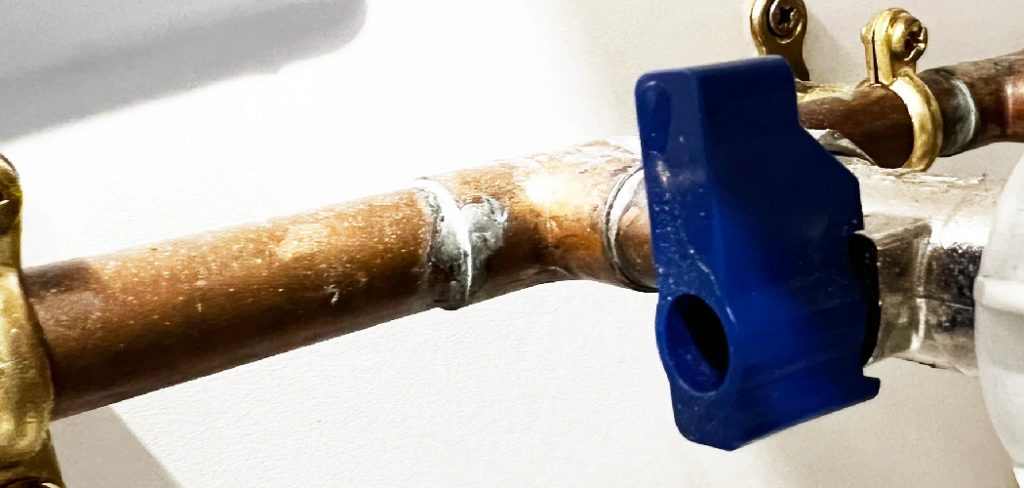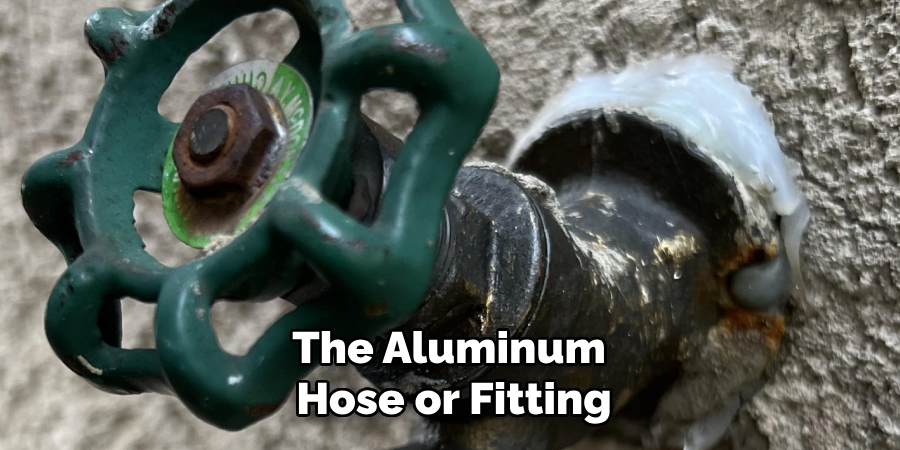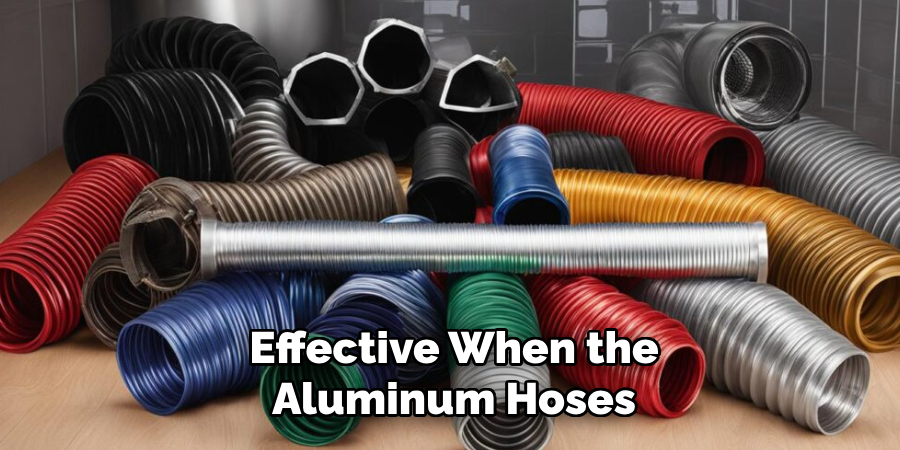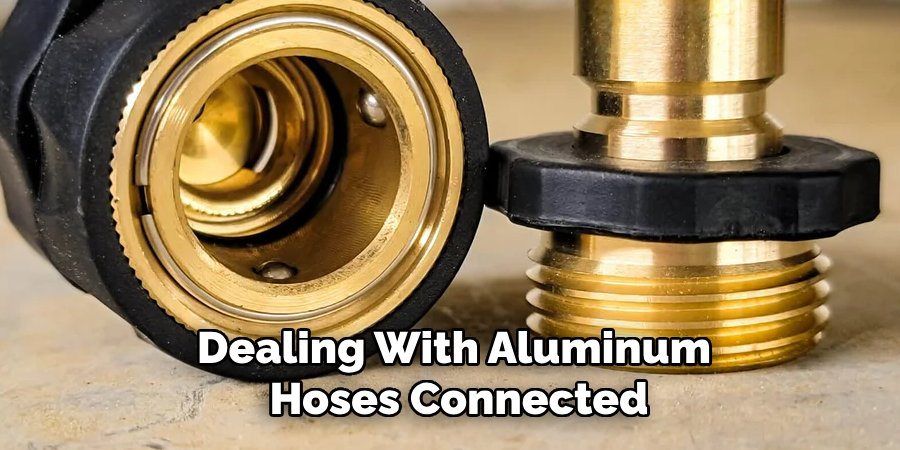Removing an aluminum hose can seem like a daunting task, especially if you’re unfamiliar with the proper tools or techniques. However, with the right equipment and a clear step-by-step approach for how to remove aluminum hose using tool, this process can be made simple and efficient. Whether you’re working on a home improvement project or performing maintenance, understanding how to correctly remove an aluminum hose ensures safety and prevents damage to the hose or surrounding components.

Tools and Materials Needed
To successfully remove an aluminum hose, you’ll need a few essential tools and materials. Having these items on hand will make the process smoother and more efficient:
- Adjustable Wrench – For loosening and removing any connected fittings or clamps.
- Screwdriver (Flathead/Phillips) – Depending on the type of clamps, a screwdriver may be required to unscrew them.
- Work Gloves – To protect your hands from sharp edges on the aluminum hose or fittings.
- Lubricant (Optional) – For loosening stubborn or corroded connections.
- Pliers – Handy for gripping and stabilizing small, hard-to-reach areas.
- Drop Cloth or Protective Mat – To protect the surrounding area from dust or debris during removal.
Ensure that all tools and materials are within easy reach before starting the removal process to avoid unnecessary interruptions.
10 Methods How to Remove Aluminum Hose Using Tool
1. Using a Hose Removal Pliers Tool
Hose removal pliers are specifically designed for removing hoses, particularly from tight fittings. These pliers feature long, angled handles with a curved jaw that grips the hose firmly. To remove an aluminum hose, clamp the pliers onto the hose near the connection point and gently twist while pulling. The curved jaws help loosen the hose from the fitting by applying even pressure, making the task easier. This method is ideal for hoses that are slightly stuck or have been on the fitting for an extended period but are not overly corroded.
2. Leveraging a Hose Removal Tool Kit
Many hose removal kits are available for various types of hoses, including aluminum. These kits typically come with a variety of attachments, such as removal hooks, splitters, and jaws, that allow for precise removal. Some kits include a specialized hook tool designed to slide between the hose and its fitting, helping to loosen the bond between them. After using the appropriate attachment for the job, gently work it around the fitting, gradually loosening the hose from all sides. This method is ideal when dealing with hoses that are very tight or when the fitting is difficult to access.

3. Applying Heat Using a Heat Gun
If the aluminum hose is particularly stubborn, applying controlled heat with a heat gun can help loosen it. The heat softens the material, making it easier to slide off the fitting. To use this method, hold the heat gun a few inches from the hose and apply heat evenly along the hose, focusing on the area around the fitting. Be careful not to overheat the hose or the surrounding materials. Once the hose becomes more pliable, use pliers or your hands to gently pull the hose off. This method is especially effective when the hose has been attached for a long time and is slightly stuck due to age or corrosion.
4. Using WD-40 or Lubricating Spray
When the aluminum hose is stuck due to rust, grime, or corrosion, applying a lubricating spray like WD-40 can help loosen the hose. Spray the lubricant generously around the base of the hose and let it sit for several minutes to penetrate the corrosion. After the wait, use a hose removal tool or pliers to twist and pull the hose from its fitting. The lubrication makes the connection slippery, reducing friction and making it easier to slide the hose off. This method is ideal for hoses that have been in place for an extended period and are beginning to show signs of wear.
5. Using a Hose Cutting Tool
If all other methods fail or the hose is severely damaged, cutting the aluminum hose may be the most efficient solution. A hose cutting tool, which typically features sharp, high-quality blades designed to slice through rubber and metal hoses, can be used to carefully cut through the aluminum hose. Make sure to cut the hose near the fitting to minimize damage to the surrounding components. Once the hose is cut, use pliers or a wrench to remove the remaining piece of hose from the fitting. This method should be used as a last resort when the hose is beyond salvageable.
6. Using a Clamp Removal Tool
A clamp removal tool is effective when the aluminum hose is secured by hose clamps, which are often used to hold the hose tightly onto its fitting. This tool allows you to remove the clamp easily without damaging it or the hose. Start by using the tool to release the clamp from the hose. Once the clamp is removed, you can proceed to slide the hose off the fitting. Clamp removal tools come in various forms, including pliers and specialized wrenches, and are useful for ensuring a secure and efficient removal process, especially when dealing with multiple clamps.

7. Tapping the Fitting with a Hammer
Sometimes, the aluminum hose can become so tightly attached to the fitting that it requires a bit of force to remove. Using a hammer with a rubber mallet can help loosen the bond. Gently tap the fitting or hose connection with the rubber mallet, being careful not to damage the surrounding components. The vibration will help break any corrosion or buildup that may be holding the hose in place. Once the hose is loosened, use pliers or a removal tool to slide it off. This method is particularly useful when the hose is stuck due to corrosion or when other methods haven’t worked.
8. Using a Pipe Wrench for Stubborn Connections
When dealing with aluminum hoses connected to metal fittings, a pipe wrench can be a useful tool for providing extra torque and leverage. Place the pipe wrench around the fitting, not the hose, and gently rotate it to break the bond between the hose and fitting. Be cautious not to over-tighten the wrench or damage the fitting. Once the fitting is loosened, you can easily slide the hose off by hand or with pliers. This method is ideal for hoses that have become stuck due to strong seals or tight connections.
9. Cutting the Hose with a Saw (for Extreme Cases)
In more extreme cases, such as when a hose is particularly stubborn and other methods fail, using a hacksaw or reciprocating saw to cut through the hose may be necessary. This is especially useful when the hose is extremely corroded or damaged beyond repair. Make sure to use a fine-toothed blade for cutting through aluminum, and take care not to damage the underlying components during the process. Once the hose is cut, remove the remaining pieces using pliers or a similar tool. Cutting should be considered a last resort when all other methods have been exhausted.
10. Utilizing a Specialized Hose Removal Tool for Specific Applications
Some applications, such as automotive or industrial systems, may require the use of specialized hose removal tools. These tools are designed specifically for particular fittings and hose types, offering increased precision and reducing the risk of damage to the surrounding components. For example, automotive hose removal tools may feature flexible heads that allow for easy removal of hoses from hard-to-reach engine parts. Depending on your application, using a tool designed for the job can make the removal process smoother and more efficient.

Things to Consider When Choosing a Hose Removal Method
- Material of the Hose and Fitting
Different methods work better depending on the materials involved. For example, aluminum hoses can respond well to heat or lubrication, while rubber hoses may be easier to cut or slide off. Understand the properties of the hose and fitting to determine the safest and most effective approach.
- Condition of the Hose
Evaluate the condition of the hose before deciding on a removal method. If the hose is old, brittle, corroded, or damaged, using excessive force or unsuitable tools may cause further damage. Consider methods that minimize the risk of tearing or breaking the hose unless it’s already being replaced.
- Accessibility of the Hose
Some hoses may be located in tight or hard-to-reach spaces, which can make removal more challenging. Choosing tools like flexible hose removal tools or employing techniques that require less working space can help in such situations.

Conclusion
Removing an aluminum hose from its fitting doesn’t have to be a difficult or frustrating task. By using the right tools and techniques, you can ensure a safe, effective removal process. From basic pliers and hose removal kits to specialized techniques like applying heat, lubrication, or even cutting, each method has its specific advantages depending on the condition of the hose and the complexity of the connection. So, there you have it – a quick and easy guide on how to remove aluminum hose using tool.
Edmund Sumlin is a skilled author for Metal Fixes, bringing 6 years of expertise in crafting a wide range of metal fixtures. With a strong background in metalwork, Edmund’s knowledge spans various types of fixtures, from decorative pieces to functional hardware, blending precision with creativity. His passion for metalworking and design has made him a trusted resource in the industry.
Professional Focus:
- Expert in Metal Fixtures : Edmund aesthetic specializes in creating durable and innovative metal fixtures, offering both appeal and functionality. His work reflects a deep understanding of metalworking techniques and materials.
- Sustainability Advocate : He is dedicated to using sustainable practices, ensuring that every fixture is crafted with eco-friendly methods while maintaining high-quality standards.
In his writing for Metal Fixes, Edmund provides valuable insights into the latest trends, techniques, and practical advice for those passionate about metal fixtures, whether they are professionals or DIY enthusiasts. His focus on combining artistry with engineering helps others discover the true potential of metal in design.


